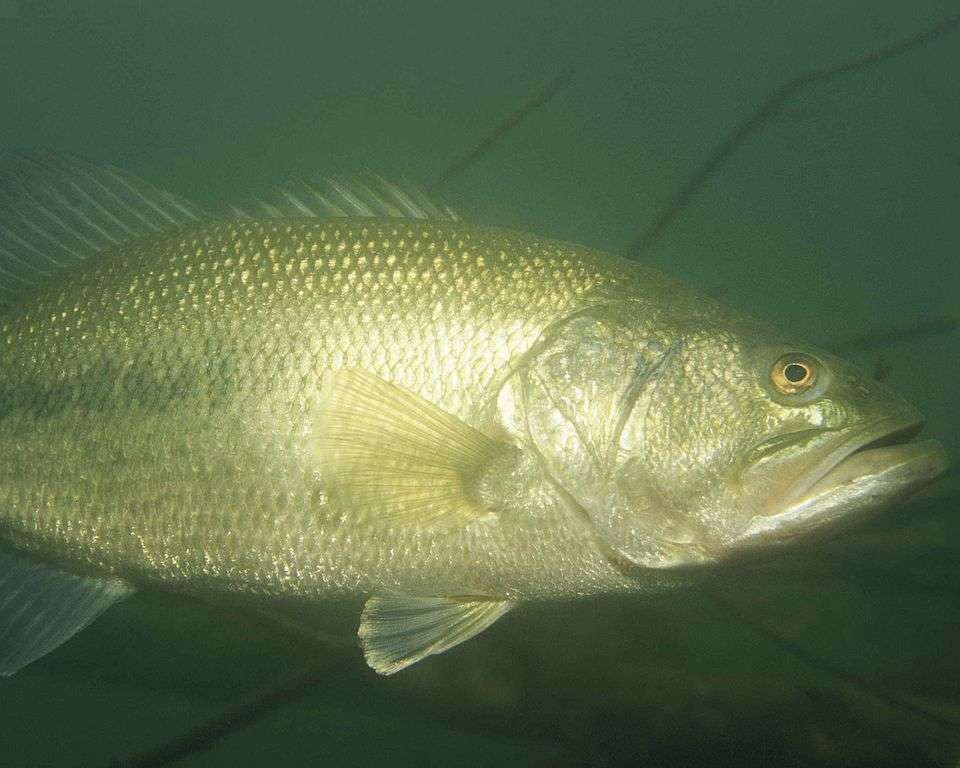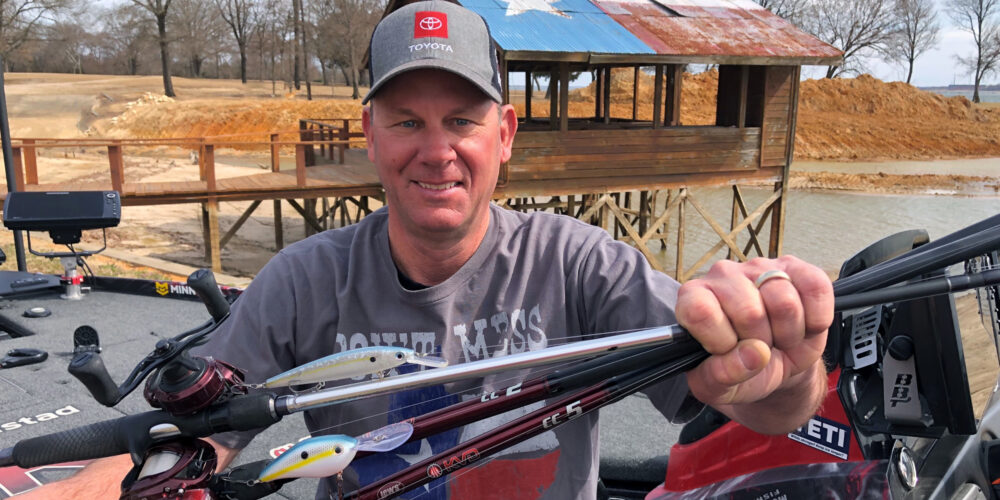This is the time of year when fishing can get tough because a lot of the bass we were catching on the bottom now like to suspend.
Summertime water temperatures are peaking and there isn’t much current to hold the bass near the bottom. The fish start roaming around looking for pods of bait.
Lakes often stratify, too, and the thermocline can keep fish from relating to the oxygen-less areas on deeper bottoms.
There are a couple of ways to determine this. First, if you have good electronics, you will see the thermocline level remains fairly consistent throughout the lake. It will show as a band across your graph, and you will notice fish above it but none below it.
Another giveaway is you will see a lot of schooling bass firing on bait out away from the bottom and structure.
The fish generally still relate to structure features, such as main lake points, ledges or around humps, but they don’t set up on the bottom where you can catch them on jigs, worms or other bottom bumping baits.
You may find them holding along the deeper side of structure elements. If you can find them relating to an edge or point or drop-off they can be very catchable.
Some suspended fish are in a neutral mode and tough to catch. But if you see clouds of suspended baitfish on your electronics with big fish marking around them, that’s a good sign they are more active.
When I see this happening I know that I need to use presentations that are efficient for fishing those mid-depth ranges.
For example, if the fish are high in the water column and the lake offers some clarity, my favorite presentation is the KVD Deep Diving Jerkbait.
If they are suspended deeper, I will use a variety of swimbaits rigged with various jig heads to accommodate different depth zones. Generally, I will have one rigged with a 3/8-ounce but if the fish are deeper, I may fashion one with a 3/4-ounce head.
I also like spoons, such as a standard jigging spoon or a flutter spoon like the Strike King Sexy Spoon and rip it above the fish and let it fall back.
And don’t forget a crankbait or spinnerbait – lures that a lot of anglers overlook when the fish are suspended. If the fish are 15 feet down, for example, I may throw a Strike King 5XD. That can really work in clear lakes even if the fish are slightly deeper than that, as the fish will travel up to bite the lure.
A spinnerbait is another bait you can maintain at a specific depth. That’s when I like a 1-ounce Bottom Dweller because I can count it down and fish through that 15- to 25-foot zone and wind it just above the suspended fish.
I always keep a drop-shot or a Neko rig handy when fishing suspended bass. If I mark a bass on my graph, I will drop down to that depth zone and hold it still; you don’t need a lot of action. I’ve had times when I could see them on my graph swim up and bite it. Now, if they come up and look at it then swim off, I will let it fall to the bottom and they will chase it down and bite it. It’s certainly worth trying.
Keep in mind that you can also fire up suspended fish around bait by utilizing your HydroWave. That’s when I set mine to delayed schooling pattern with a 60-second delay. That gets the bait nervous which in turn can trigger the bass into feeding aggressively and fire up a school.
Admittedly, suspended fish can be tricky, but you can make them bite, especially when they are around schools of bait. Just be sure to choose a lure that stays in their strike zone and maintain that depth throughout the cast.
And remember, it’s all about the attitude!






Leave A Comment